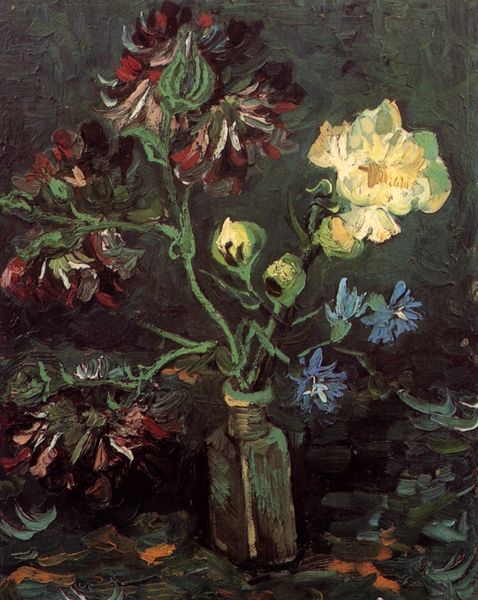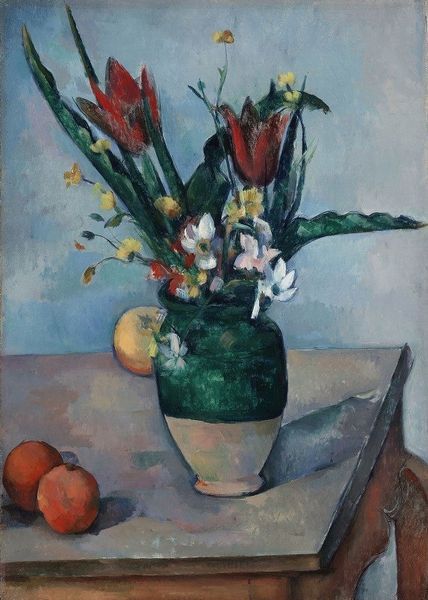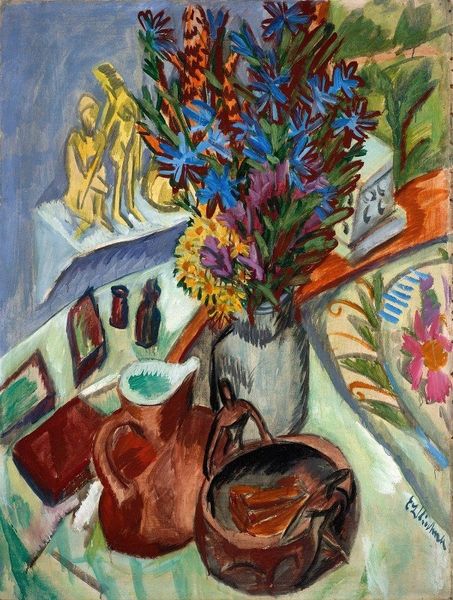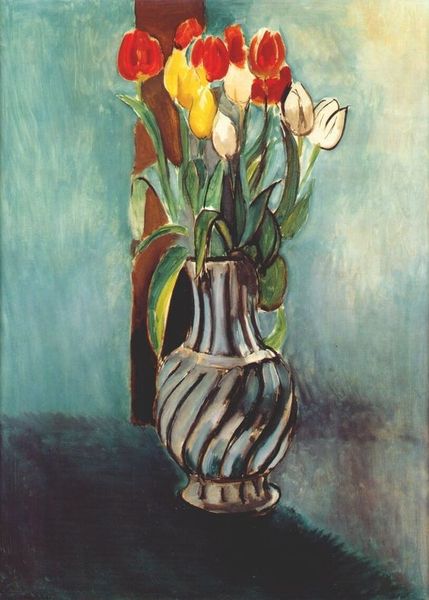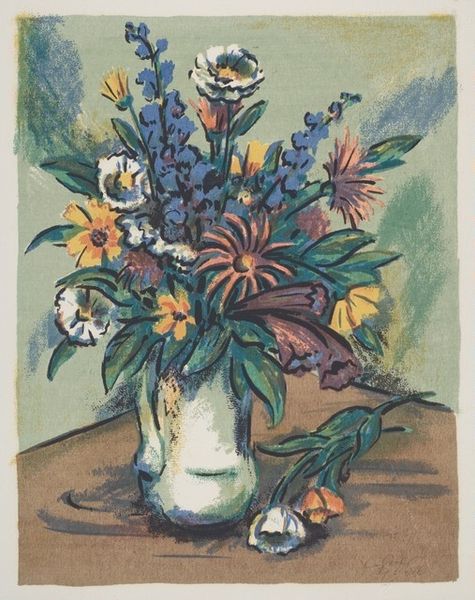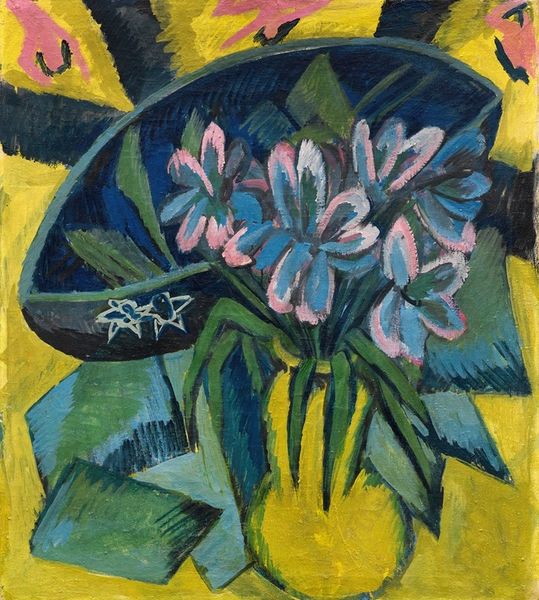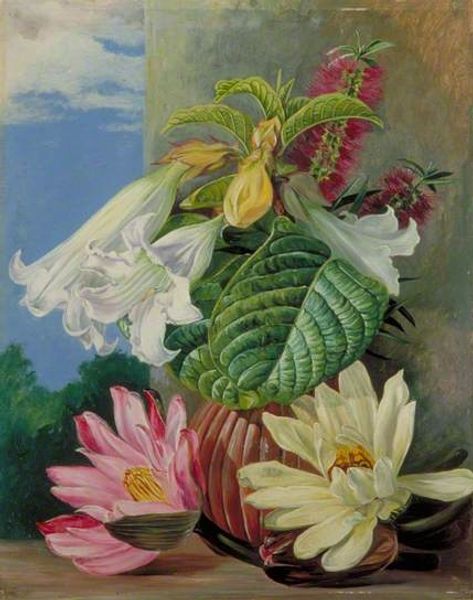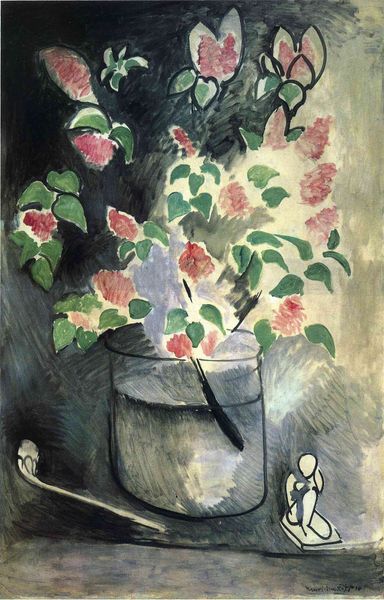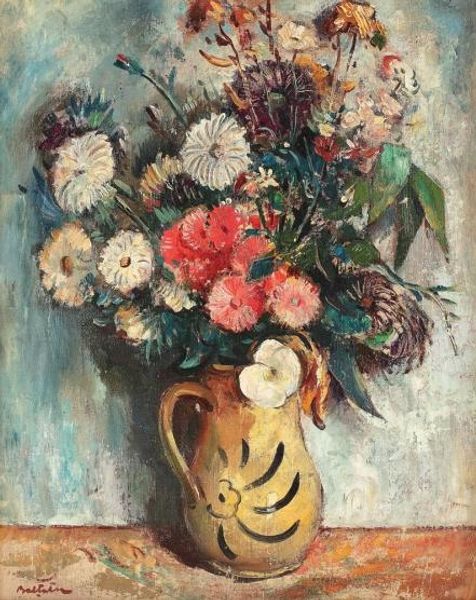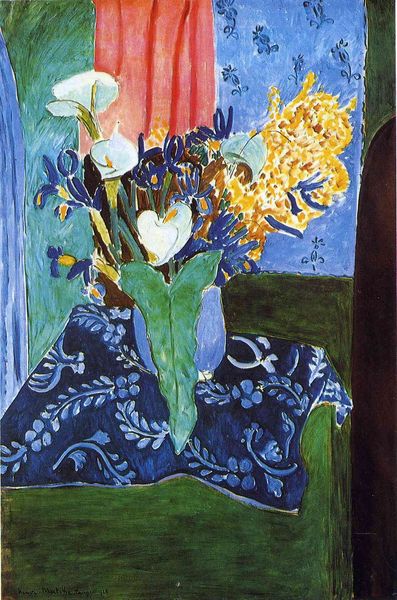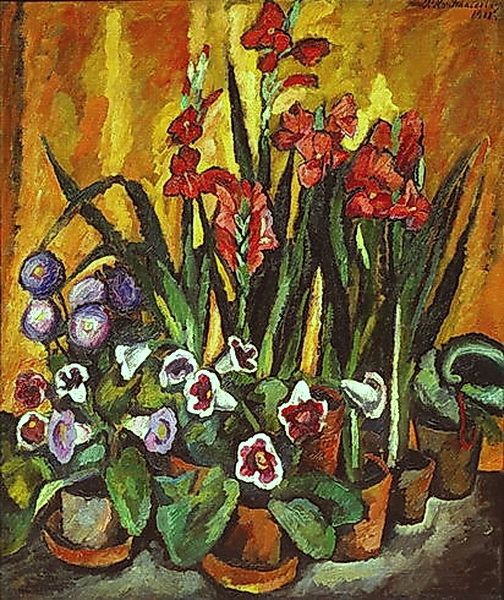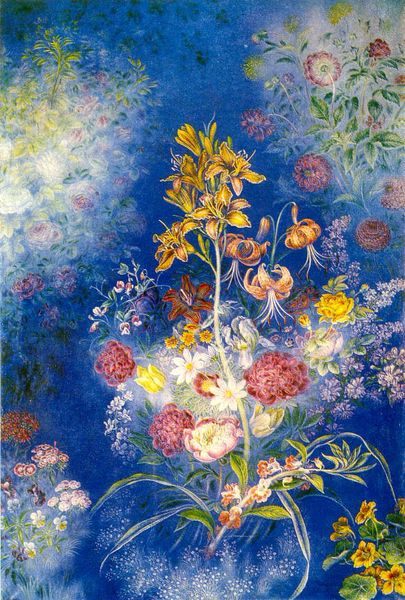
painting, oil-paint
#
painting
#
oil-paint
#
figuration
#
oil painting
#
naive art
Copyright: Alberto da Veiga Guignard,Fair Use
Curator: Welcome. We're standing before Alberto da Veiga Guignard’s "Orquideas," an oil painting completed in 1937. It offers us an intriguing perspective on Brazilian modernism and figuration. Editor: It strikes me immediately—the colour palette, this lush sort of fantastical still life blooming against a...a suggestion of distant mountains. It's dreamy, like a memory half-remembered. Curator: The dreamlike quality you perceive aligns interestingly with Guignard’s biography. As scholars have noted, his life, marked by personal struggles and an expatriate childhood, deeply influenced his artistic style. His aesthetic emerged during a period of social and political upheaval in Brazil, reflecting an internal search for harmony through idealized visions. Editor: Harmony is the word! There's something intentionally, beautifully naive about it. Not clumsy, not unskilled, but almost as if a very talented child had dreamt the orchids and then painted them. The brushstrokes have a gentle honesty. Curator: That naivety might speak to a larger societal tension. The artwork emerges from a time when Brazilian artists grappled with national identity, torn between embracing European artistic conventions and asserting a distinct cultural voice. This embrace of the 'naive' might be a subversive form of decolonization, turning away from academic training to portray beauty on his own terms. Editor: Huh. That makes me think about the vase the orchids are in, a very simple design painted like ancient pottery, sitting in front of scenery done with Western influence. I hadn't thought about that at all until you just put it in that perspective. And those background mountains? Almost stage set like in their simplicity... Curator: Indeed. His painting practice frequently looked at challenging and overturning elitist aesthetic ideals. This simplicity becomes powerful, challenging accepted historical views and inserting other narratives that center lived experience as a valid aesthetic position. Editor: So, you're seeing a bit of cheeky political rebellion peeking out of the flowers? I like that. I definitely didn't read it on first look, but you're spot on. It all does seem so obviously intentionally simple! Curator: Precisely. By understanding the period from which Guignard developed this work, and the theoretical contexts from which he grew, we understand its depth, and its purpose. Editor: Suddenly it's way more interesting than "nice flowers." Now I'm looking at "Orquideas" and asking why these flowers, why this arrangement? Good stuff.
Comments
No comments
Be the first to comment and join the conversation on the ultimate creative platform.

